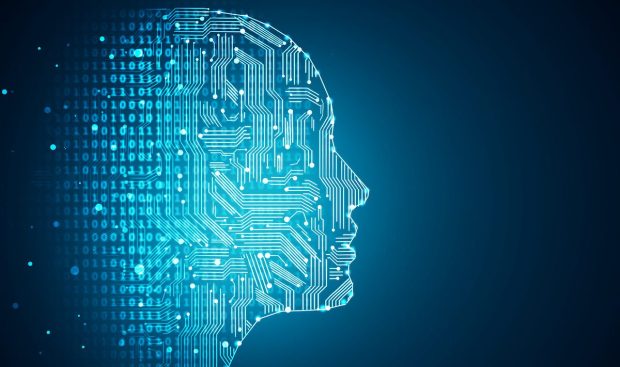Generative AI Helps Auto-Complete Commercial Transactions

The B2B ecosystem is mired in legacy and often interpersonal, relationship-based processes.
At the same time, commercial buying and selling has become increasingly complex and fragmented. That’s where generative artificial intelligence (AI) can come into play.
The commercial economy is already being transformed by the current crop of generative natural language processing (NLP) and machine learning (ML) tools that promise to simplify inherent complexities and automate redundant, manual tasks.
And while generative AI’s use cases are so broad that certain moonshot applications may fall under the umbrella of solutions in search of problems, the technology particularly shines within the no-nonsense realities of the contemporary B2B environment.
AI innovations can help bridge the priorities of both new- and old-generation commercial players by generating tailored communications, real-time quotes, and allowing for a personalized single source of truth.
While it has been difficult for buyers and sellers to leverage emergent technologies like AI, NLP and ML due to the constraints of their older systems, as well as an ongoing behavioral reticence around changing the way business has always been done, the commercial world is only growing more digitized, connected and efficient.
Read also: Why B2B Tech Will Drive the Next Innovation Cycle
A Digital-Centric Model Is Becoming Increasingly Inevitable
The B2B space is undergoing a pivotal transition as its historically manual and relationship-based processes evolve to rely more on transactions that blend in digital elements.
The old ways of buyers and sellers being matched up through manual processes full of phone calls, emails and in-person interactions are now giving way to a more modern commercial dynamic where firms are tapping digital solutions to streamline the procurement process, find and win deals, execute contracts and manage their businesses more effectively.
“There’s a value in simplifying an existing relationship by making it smoother, whether that’s across contracts, communication or payments,” Kaustubh Pandya, partner at Brick & Mortar Ventures told PYMNTS in July.
Modern solutions that leverage AI and NLP to remove the manual lift and sunk time cost from replying to emails and coordinating price-matching over the phone or via text are already helping to remove legacy inefficiencies from the B2B process.
“Many people in professional positions, they don’t really like a blank piece of paper or a blank screen,” Raja Singh, co-founder and CEO of Revolear, told PYMNTS. “If they can leverage a pre-written email …, or they can leverage AI to generate elements of a proposal, they’ll prefer to do that rather than drafting from scratch.”
A new generation of providers is tapping conversational AI tools to convert recorded dialogue into transcripts where AI can analyze the interactions for key phrases and details that are then auto-filled into communications.
Questions like how much things cost, the terms of a deal, and more basic questions at the core of every commercial transaction may seem simple on the surface but are complicated and fragmented given the number of stakeholders involved and behavioral dynamics at play Singh said.
That’s why leveraging generative AI-driven communications to solve for their inefficiencies is an attractive opportunity.
Simplifying B2B Relationships Adds Value and Builds Trust
“B2B has needed to put up with bad software for a long time, or one-size-fits-all software, that wasn’t really built for them,” Constructor CEO and Co-founder Eli Finkelshteyn told PYMNTS in July.
“It just makes a whole lot more sense to have AI solve that problem for you and do 90%, 95% of the work,” he added.
That doesn’t mean that text messages, phone calls and emails are going away completely. But the integration of digital tools into B2B workflows will steadily increase as firms recognize their benefits as part of a natural continuum, just as phone calls themselves have morphed into texts.
And the tipping point may not be a technical one, but a generational one.
“We’re really trying to get away from phone calls … but the reality is that, in this space, there are still plenty of people who want to do it the old-fashioned way,” Jordan Wagner, vice president and general manager at Torque by Ryder, told PYMNTS in July. “The old channels are still very, very prevalent.”
Raz Ronen, CEO at FreightTech startup Wisor.AI, said earlier this year to PYMNTS: “There’s legacy businesses, family businesses, old traditional companies that have now reached a point in the last two years where they understand that if they don’t take the next step, they will have troubles, they might even close, because they now need technology to provide the right level of service that their customers are looking for.”
Fernando Correa, CEO and co-founder of international digital trade company Cargobot, echoed that sentiment.
“A phone call is not a structured relationship, an email is not a structured relationship,” he told PYMNTS in April. “These new tech innovations [being brought to market within the industry] are meant to organize an entire relationship that was previously unorganized, and where efficiencies slipped through the gaps.”
Around 40% of executives said there is an urgent necessity to adopt generative AI, and the generative AI market is expected to grow to $1.3 trillion by 2032, compared to $40 billion in 2022.
At the end of the day, B2B tech innovations, which are inherently meant to organize information and better structure previously unorganized relationships, are now allowing firms involved to capture easy-win efficiencies that have historically been lost among legacy inefficiencies and manually reliant procedural gaps.
For all PYMNTS B2B coverage, subscribe to the daily B2B Newsletter.

